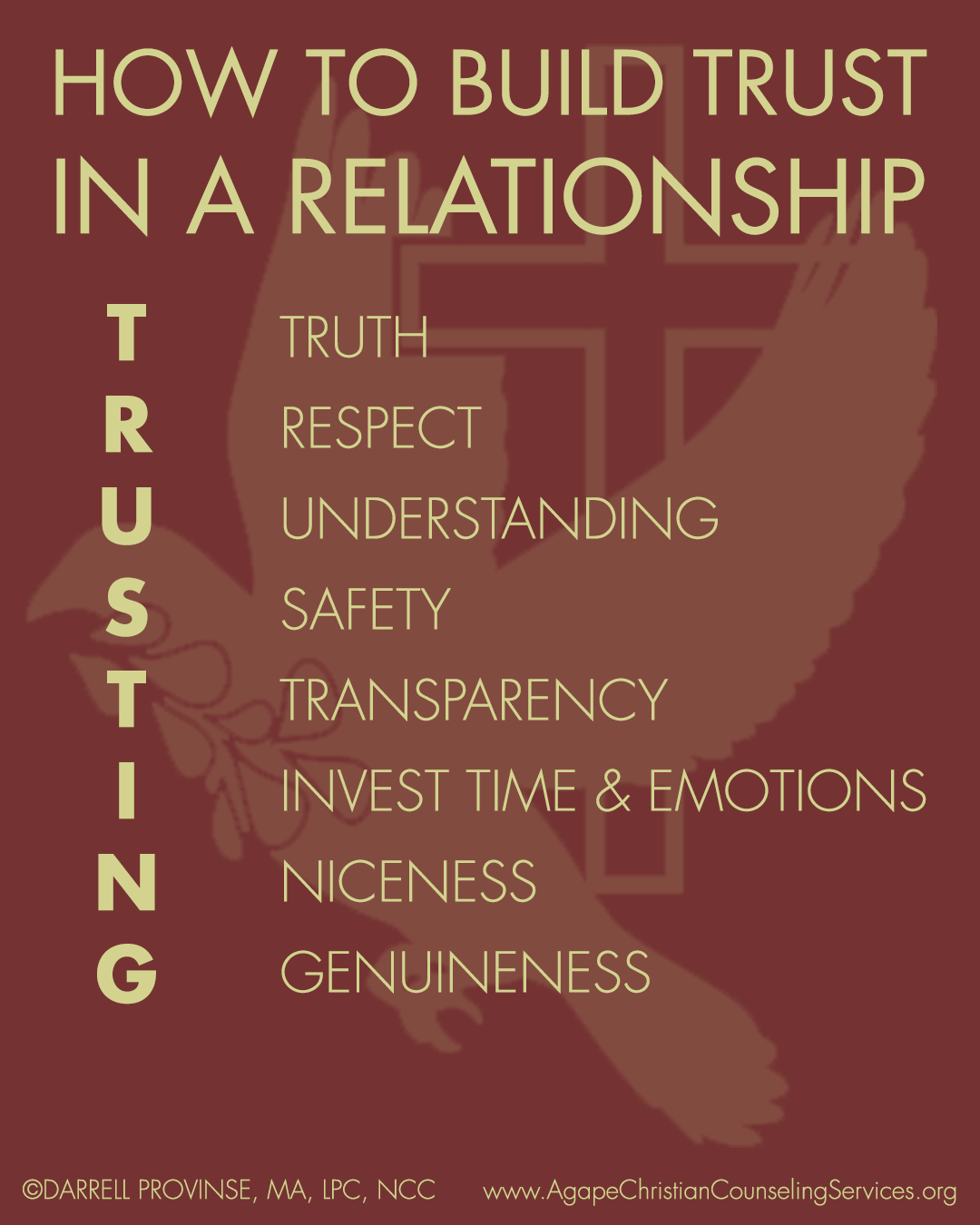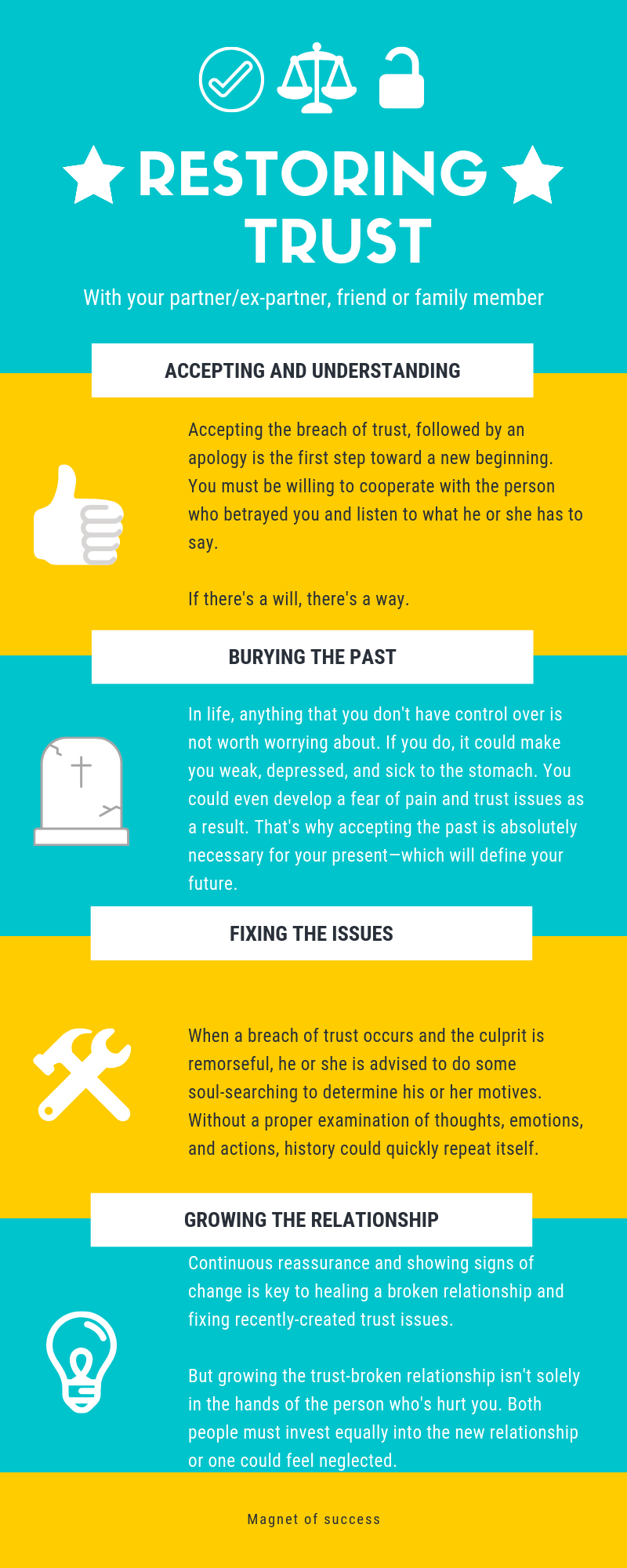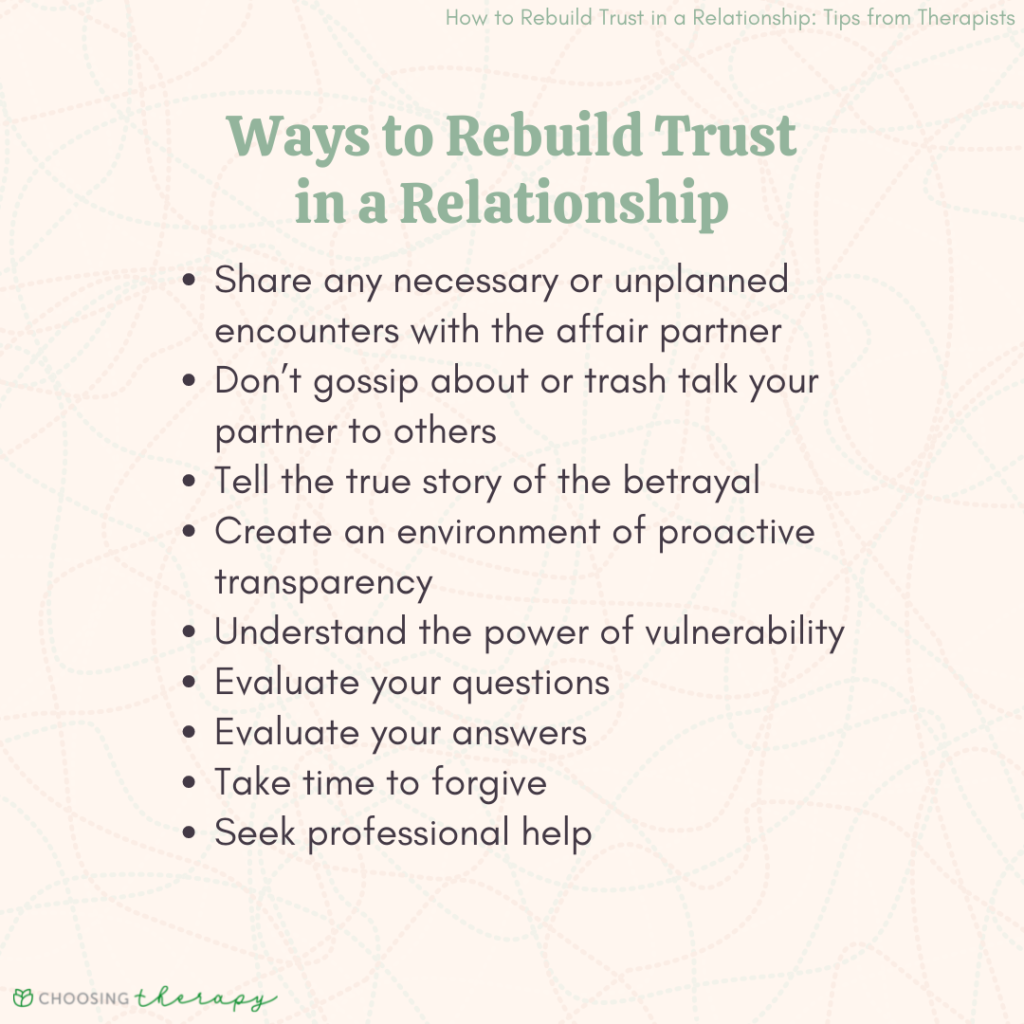How To Build Someone's Trust Again

Imagine the fragile beauty of a delicate glass sculpture, shattered by a careless hand. The pieces lie scattered, reflecting light in a distorted, painful way. Rebuilding it seems daunting, perhaps even impossible. But with patience, skill, and unwavering dedication, the fragments can be pieced back together, creating something beautiful, albeit bearing the marks of its past trauma. This, in essence, is the journey of rebuilding trust.
Rebuilding trust is a complex, nuanced process. It requires more than just apologies; it demands consistent action, unwavering honesty, and a genuine commitment to repairing the damage. This article will explore the essential steps involved in regaining someone's trust, providing insights and practical advice for navigating this challenging but ultimately rewarding endeavor.
The Foundation: Understanding the Breach
Before embarking on the path to reconciliation, it's crucial to understand the nature and extent of the betrayal. What specific actions led to the loss of trust? What were the consequences, both tangible and emotional? Understanding the other person's perspective is paramount.
Listen empathetically without defensiveness. Avoid interrupting or minimizing their feelings. Let them express their pain and disappointment fully. According to a study published in the Journal of Social and Personal Relationships, feeling heard and understood is a critical factor in forgiveness and trust repair.
Acknowledgement and Remorse
A sincere apology is the bedrock of rebuilding trust. This isn't just about saying "I'm sorry." It's about acknowledging the specific harm caused, taking full responsibility for your actions, and expressing genuine remorse.
Avoid making excuses or blaming others. Acknowledge the pain you inflicted and demonstrate empathy for the other person's experience. The apology should be genuine, heartfelt, and free from any conditions or expectations.
The Rebuilding Process: Actions Speak Louder Than Words
Apologies, however heartfelt, are insufficient without concrete actions to back them up. Rebuilding trust requires sustained effort and a commitment to changing behavior.
Consistency is key. Small, consistent acts of honesty and reliability will gradually erode the foundation of doubt and suspicion. Be predictable and dependable in your actions.
Open and transparent communication is vital. Share your thoughts and feelings honestly, even when it's uncomfortable. Be willing to answer questions and address concerns directly. According to Dr. Brené Brown, vulnerability is the birthplace of trust.
Be patient. Rebuilding trust takes time, often longer than anticipated. Avoid pressuring the other person to forgive you or to trust you again. Respect their pace and allow them the space they need to heal. Trust can be rebuilt, but it will never be exactly the same.
Maintaining Trust: A Lifelong Commitment
Rebuilding trust is not a one-time event; it's an ongoing process. Once trust is restored, it's essential to maintain it through consistent effort and mindful behavior.
Continue to prioritize honesty and transparency in all your interactions. Be mindful of your actions and the impact they have on others. Practice empathy and compassion in your relationships.
Regularly check in with the other person and ask how they are feeling. Be open to receiving feedback and making adjustments as needed. According to research from The Gottman Institute, healthy relationships require ongoing maintenance and communication.
"The best proof of love is trust." - Joyce Brothers
Rebuilding trust is a journey, not a destination. It requires patience, humility, and unwavering dedication. But with consistent effort and a genuine commitment to change, it is possible to heal broken bonds and create stronger, more resilient relationships.
The process is not easy, there will be set backs, but with dedication and genuine willingness to change, rebuilding trust is possible. It is a testament to the strength of the human spirit and the enduring power of connection.


.png?1534952396)















